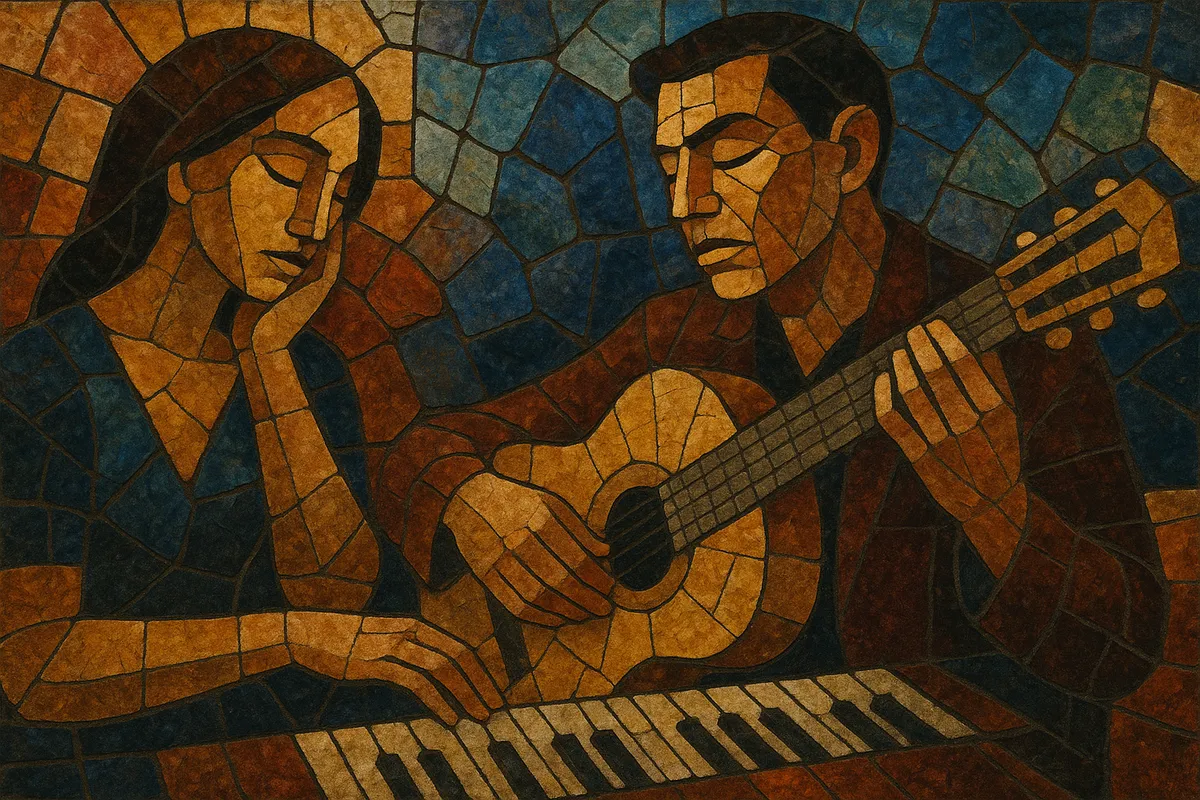Filin (from the English word “feeling”) is a mid‑20th‑century Cuban song movement that blends the poetry and romanticism of bolero and Cuban trova with the harmonic language and phrasing of U.S. jazz.
Characterized by intimate, crooning vocals, sophisticated jazz‑influenced chord progressions, and small‑combo accompaniment (guitar or piano with light rhythm section), filin favors subtle dynamics, rubato, and conversational phrasing. Its songs often use AABA or verse–refrain forms and highlight nuanced lyricism about love, memory, and urban nightlife.
Emerging from Havana’s bohemian clubs and radio scene, filin modernized Cuban romantic song and became a key bridge between early trova/bolero and later currents such as nueva trova and jazz‑inflected Latin balladry.
Filin arose in Havana during the late 1940s as young composers and singers sought a more harmonically adventurous, emotionally direct approach to romantic song. Drawing on bolero and the legacy of Cuban trova, they absorbed the jazz harmonies and phrasing heard in U.S. swing, bebop, and cool jazz records circulating in Cuba, as well as in cosmopolitan nightclubs and radio orchestras.
The style emphasized close‑mic, intimate singing; conversational timing; and jazz chords (maj7, 9ths, 11ths, altered dominants) folded into bolero rhythms. Small venues, cabarets, and late‑night radio programs nurtured this sound. Guitarists and pianists reharmonized standards and introduced original songs with sophisticated progressions.
Composers such as César Portillo de la Luz and José Antonio Méndez wrote enduring songs (“Contigo en la distancia,” “La gloria eres tú”) that became filin touchstones. Voices like Elena Burke and Omara Portuondo, and ensembles like the Cuarteto d’Aida, carried the repertoire to broader audiences. Pianists and arrangers with strong jazz sensibilities—among them Frank Emilio Flynn and Frank Domínguez—helped codify its harmonic palette.
By the 1950s, filin was a recognized current of Cuban popular song, heard in clubs, theaters, and on radio/TV. New writer‑interpreters, including Marta Valdés, enriched the repertory with introspective lyrics and elegant melodies. The opening of venues like El Gato Tuerto (1960) kept the movement visible into the 1960s, even as musical tastes diversified after the Revolution.
Filin modernized Cuban romantic songcraft and anticipated later singer‑songwriter currents. Its harmonic language and intimate delivery influenced nueva trova in Cuba and intersected with broader Latin ballad traditions. Scholars and musicians often cite filin as a precedent parallel to—and influential on—the understated, jazz‑tinged aesthetics that would define bossa nova. Periodic revivals and tributes, alongside the careers of filin‑associated artists who found renewed attention, have preserved the style’s importance.


